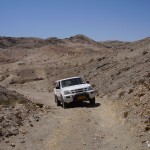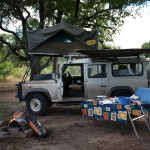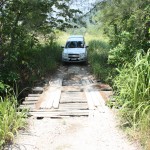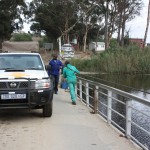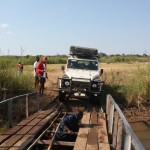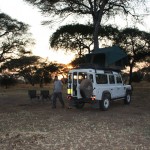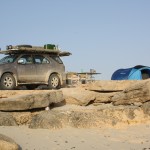Choosing an overland vehicle was the first of our planning tasks. It’s the biggest investment and we really had to get this right. As you will see, a fair amount of research went into this. Here’s how we went about researching and choosing an overland vehicle.
Choosing an overland vehicle
There is no obviously perfect vehicle for undertaking an overland trip and compromises always need to be made. We are fortunate not to have had too tight a budget for setting ourselves up for this trip, but resources will be limited now we have given up work and hit the road. In choosing an overland vehicle, we need one that is reasonably economical to run and maintain. Another point for us, was that this was going to be our permanent home for some time – probably years! Unlike many other overland travellers, we are not travelling for a few months at a time then flying back to Europe periodically for some ‘home comforts’. Our new ‘home’ had required criteria such as:
- a decent bed and comfort in adverse weather;
- civilised amenities such as a ‘proper loo’ and a hot water shower;
- capacity to carry enough fuel, water and supplies for around 2 weeks away from a town;
- vehicle capability to cope with Africa’s rough-road and off-road driving conditions (and capacity to carry the recovery gear for when the vehicle can’t cope with the conditions!); and
- communications to stay in touch with the world, particularly for emergencies.
However we also wanted to choose a vehicle as small and manoeuvrable as possible. The challenges in choosing an overland vehicle were therefore: (i) to decide our preferred vehicle and kit to take; and then (ii) how to fit an elephant into a rabbit hole.
First, we thought back to our previous ‘mini-overland’ trips made on holidays over the years.
Previous Vehicles
Our previous trips had been with either rental 4×4 vehicles around the world, or our own Toyota Fortuners in the Middle East. They were all great at the time, but made us realise that a longer term trip such as this one, will require substantially more comfort! We needed to start from scratch and re-think what we need for this trip.
- Isuzu Trooper, Namibia 2007
- Landrover Defender, Namibia, Botswana and Zambia 2008
- Ford Ranger, Borneo 2009
- Nissan, South Africa 2011
- Landrover Defender, South Africa, Mozambique and Swaziland 2011
- Defender, Tanzania 2013
- Our Toyota Fortuner, seen here on the coast of Oman
The starting point – a Land Rover – old or new?
Hmmm…. what is the ideal vehicle for an English couple wanting to drive around Africa? Easy: Land Rover Defender.
Land Cruisers and other Toyotas may be taking over the markets across the world, but you can’t beat the classic Defender for a bimble around the African bondu! At least this is where we started the thought process of choosing an overland vehicle.
Should the Land Rover be new or old?
‘Old’ is cheaper, easier to fix and likely to have fewer issues with dodgy African fuel. But it is less reliable and has higher fuel consumption. With fuel being by far the largest part of our daily budget, we were very concerned to minimise this on-going cost over the whole trip.
‘New’ is hopefully more reliable, but could be more sensitive to dodgy fuel. And if something does break when you are out in the bush, can you fix it? Modern Bosch electronics are now exceptionally reliable. Even if the wires joining the boxes are not quite as good, the wires can be fixed in the field. Provided you have (and can use) an engine diagnostic computer, the new engine and electronics should be pretty fail-safe!
On balance, taking into account Marcus’ (a.k.a. ‘Tucky the Techie’) background in electronics and avionics, we decided to ‘go new’ for the reliability, but also to carry the diagnostic computers necessary to diagnose any problems with the engine electronics.
Modifications to the Defender base vehicle
We then considered how to prepare the Defender and what modifications to make for our driving and living conditions. Having enjoyed numerous self-drive ‘overland’ holidays in Africa, we have grown to love the roof-top tent so ubiquitous in those parts. However we also considered that a few weeks holiday, with fine weather and camping nights scattered between stays in luxury lodges, is a very different concept to several months (or years) living in/on or around the vehicle. Travelling all year round, in all weathers and seasons of monsoon rains is a wholly different prospect. We rapidly concluded that a roof-top tent would not ‘tick the boxes’ and we needed a more ‘sog-proof’ solution.
We started looking at campervan-type conversions on the Land Rover chassis but initially couldn’t find any that we really liked. ‘Tucky the Techie’ set about designing a conversion that he could build himself onto either a Land Rover or a Land Cruiser. This led to some interesting designs, but in each case the maths on the weight of all the necessary materials, equipment, fuel, food and water just didn’t work for the maximum payloads of the chassis. We needed something with a bigger load capacity than a Land Rover or Land Cruiser and went back to the drawing board……. hmmm…. bigger than a Land Rover, but how big?
Alternatives to the Land Rover
We knew the kind of areas of Africa that we wanted to visit and the kind of off-road driving that we love to do; the really big mega-trucks were just not going to suit our needs. We wanted something not much bigger in size than a Landrover 130, but with a significantly higher load rating and good off-road performance. The most obvious choice was the Unimog: a great off-roader and the smaller version is not too big. However a few issues let this option down, particularly the price and the fuel economy.
Whilst researching our options we came across the new model Iveco Daily 4×4. The older model Iveco Daily 4×4 has been a popular choice for off-road campervan conversions for years and has a good reputation. It looked tempting. A quick check of the prices for a new Unimog compared to the new model Iveco Daily, made the decision much easier: the Iveco Daily 4×4 wins by some distance.
Iveco Daily 4×4 – old or new?
We then had to reconsider the decision of whether to look for an older second-hand vehicle or brand new. For the same reasons as we had considered for the Land Rover (above), we decided on brand new. Only time will tell whether this is a good decision, but if you drive a new car, ask yourself how often it has broken down completely and left you stranded? True, there are a lot of electronics in modern vehicles. But they are generally far more reliable than the old mechanical systems that they replaced.
Whenever you hear of a new vehicle having a problem, it is usually that they had to drive back to the garage because a warning light has come on, or they have lost some power. This is a sign of the advantage of modern electronics. In the ‘good old days’ the vehicle would have simply died and left you stuck on the side of the road requiring mechanical assistance. Now they go into ‘limp-home’ or reversionary mode to keep you moving, albeit at reduced power in some cases. In our case, ‘Tucky the Techie’s’ geekery expertise, an ‘emergency bag’ of spare electronic engine sensors and a few basic mechanical spares should see us right in most situations in Africa.
Watch this space to see whether this is proven to be misplaced optimism…!
Final thought… shipping considerations
One aspect that we considered, and which we know taxes many brains when choosing an overland vehicle, is shipping. Should fitting our vehicle into a container be a priority? Compacting the vehicle to container-size brings with it several design limitations and compromises. In our view, the question is best answered by asking the following question: how many days/weeks/months will we spend living in our vehicle? And how many days/weeks/months will the truck spend being shipped? It’s a no-brainer really 🙂 See much more on this on the Shipping page
Click here to go back to Truck and Kit home page
Hey… was this useful? If so, you might like to support our website costs with a donation below. Thanks 😊👍

